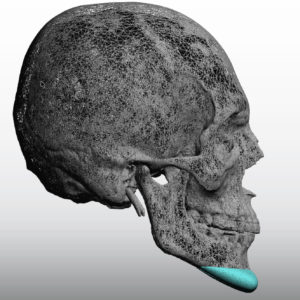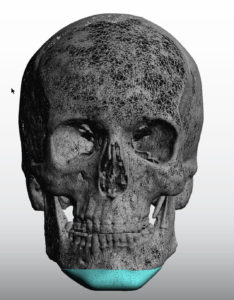Chin implants are the original and most frequently performed facial implant augmentation procedure. With an over fifty year history of clinical use it is no surprise that a wide variety of implant styles and sizes of each have become available. Despite the relatively small size of the bony chin, many different implant shapes have evolved to change its shape. While all of these implant styles create some degree of horizontal projection, they differ primarily in how far back along the jawline they go and augment it as well.
But despite the variety of off-the-shelf options, standard chin implants will not achieve the aesthetic objectives of every patient. The chin being a central projecting facial feature should be viewed as a 3D structure. As such when considering its augmentation all dimensions need to be considered including horizontal projection, vertical length, and its width. Technically its 4th dimension is how it connects to the jawline behind it. (lateral wings of the implant)

While custom designing allows for any chin implant shape and size to be made, it is important to consider how the soft tissue pad of the chin will adapt over it. The tightness of the soft tissue chin pad does provide a limit as to how much implant volume can be placed under it. This is reflected in the potential inability to get the soft tissue pad pulled sufficiently over it which can result in a ‘double bubble’ chin deformity. This is the one cautionary note in larger custom chin implants, indicating that just because you can make it does not always mean it will fit into teh soft tissue cover.
Dr. Barry Eppley
Indianapolis, Indiana



